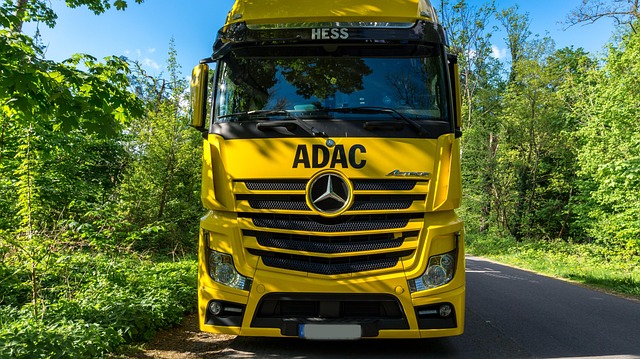Looking to register your car in California? Navigating the process can seem daunting, but with the right preparation, it’s straightforward. This guide walks you through every step, from understanding key requirements to securing your license plate. We cover essential documents, the importance of DMV VIN verification, and completing the registration application smoothly. By following these steps, you’ll be legally registered in California in no time.
- Understand California Car Registration Requirements
- Gather Necessary Documents for DMV Visit
- Perform VIN Verification at the DMV
- Complete Vehicle Registration Application Process
- Pay Car Registration Fees and Receive License Plate
Understand California Car Registration Requirements

Before registering your car in California, it’s crucial to understand the state’s specific requirements for vehicle registration. The California Department of Motor Vehicles (DMV) mandates that all vehicles operated within the state be properly registered and have undergone a comprehensive inspection. This includes verifying the Vehicle Identification Number (VIN) to ensure the vehicle’s authenticity and history.
One key step in the process is the DMV’s VIN verification, which checks the vehicle’s registration status, title history, and potential recalls or issues reported by manufacturers. For added convenience, many residents opt for a mobile VIN inspection service, allowing them to complete this necessary check from the comfort of their homes. This streamlined approach ensures compliance with California car registration regulations while saving time and effort.
Gather Necessary Documents for DMV Visit

Before heading to the DMV, ensure you have all the essential documents for a smooth registration process. One crucial piece of paper is the Vehicle Identification Number (VIN) verification report. This can be obtained through various methods, including a mobile vin verifier or by conducting a simple online check. Some states offer an alternative route with a mobile vin inspection service, allowing you to verify the VIN digitally before visiting the DMV.
Having these documents ready will save time and potential headaches. Additionally, gather your vehicle’s registration from its previous state (if applicable), proof of insurance, and a valid driver’s license. Make sure all information is up-to-date and accurate to ensure a successful car registration in California.
Perform VIN Verification at the DMV

Before registering your car in California, it’s crucial to perform a Vehicle Identification Number (VIN) verification at the Department of Motor Vehicles (DMV). This process ensures that your vehicle meets all safety and emission standards required by the state. The DMV offers several options for this verification, including a mobile VIN inspection service.
A mobile vin inspector can visit you at your location to conduct a thorough vin inspection. This is particularly convenient if you have a hard-to-reach vehicle or prefer not to make multiple trips to the DMV. Mobile vin verifiers are equipped with the necessary tools and technology to swiftly complete the verification process, allowing you to register your car without any delays.
Complete Vehicle Registration Application Process

To complete the vehicle registration process in California, you’ll need to follow a straightforward application procedure. Start by gathering all necessary documents, including your vehicle’s registration certificate from the previous state, proof of insurance, and identification showing your residency in California. Once prepared, visit a California Department of Motor Vehicles (DMV) office or use their online services for a dmv vin verification. This step is crucial as it involves vin inspection to ensure the vehicle’s identity and history are accurate.
When applying, you’ll complete a form, providing details about your car, including its make, model, year, and unique Vehicle Identification Number (VIN). A mobile vin inspector or mobile vin verifier can assist with this process if you prefer a more convenient approach. After submission, the DMV will process your application, and upon approval, you’ll receive your California vehicle registration plates.
Pay Car Registration Fees and Receive License Plate

After completing the registration application, it’s time to pay the car registration fees. These fees vary based on vehicle type and emissions standards. You can typically pay online or in person at a California DMV office. Once your payment is processed, you’ll receive your license plates. These plates display unique identifiers linked to your vehicle through the DMV’s system.
A crucial step in this process involves the DMV VIN verification, ensuring that your vehicle meets all legal standards before issuing registration and plates. For added convenience, some services offer mobile vin verifiers or a vin inspection conducted by professionals right at your location. This streamlines the process, eliminating the need for you to visit a DMV office.
Registering a car in California involves understanding specific requirements and gathering essential documents. By performing a DMV VIN verification, completing the registration application process, and paying relevant fees, you can ensure your vehicle is legally registered. This simple step-by-step guide enables you to navigate the process efficiently, ensuring your vehicle is compliant with California’s regulations. Remember, proper registration is crucial for road safety and legal driving in the Golden State.
